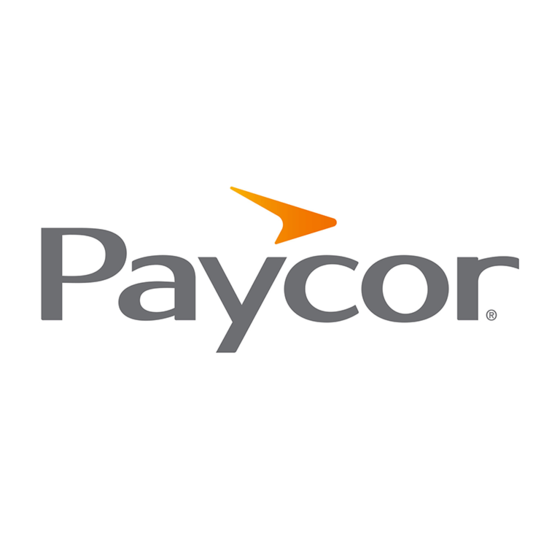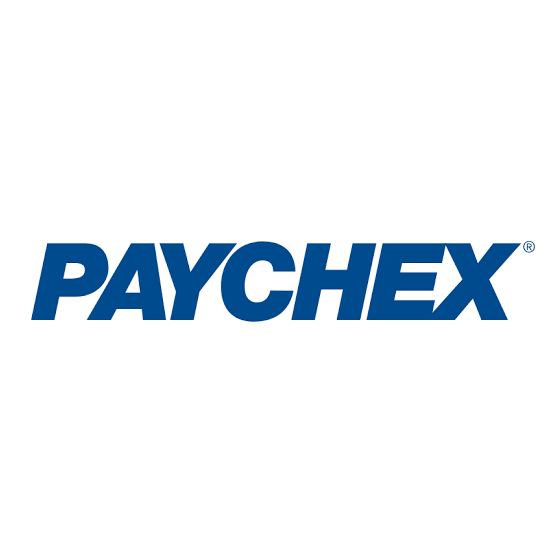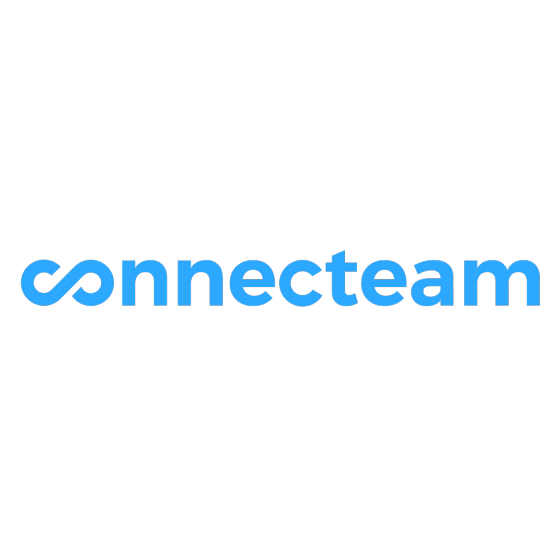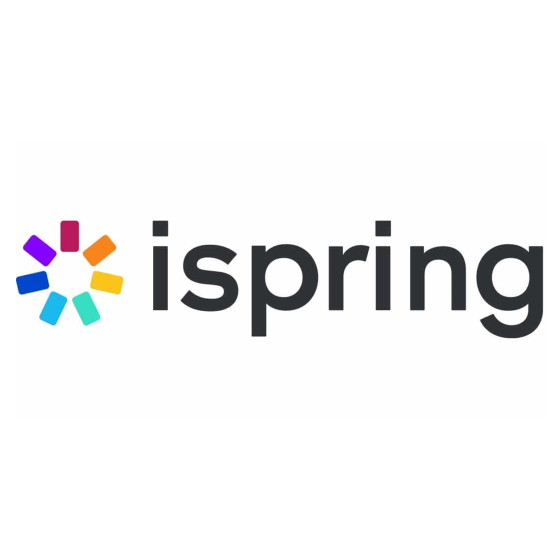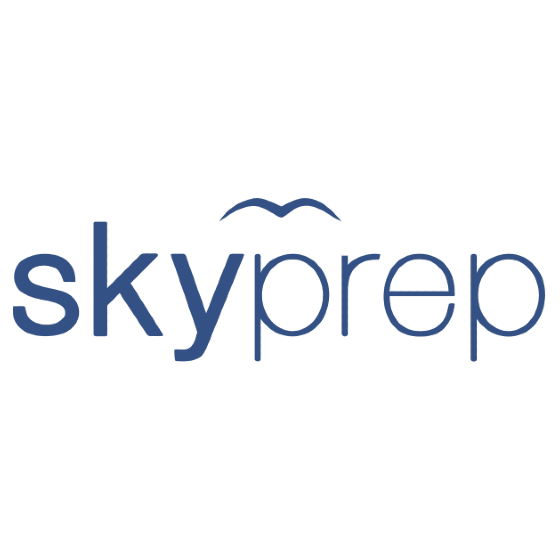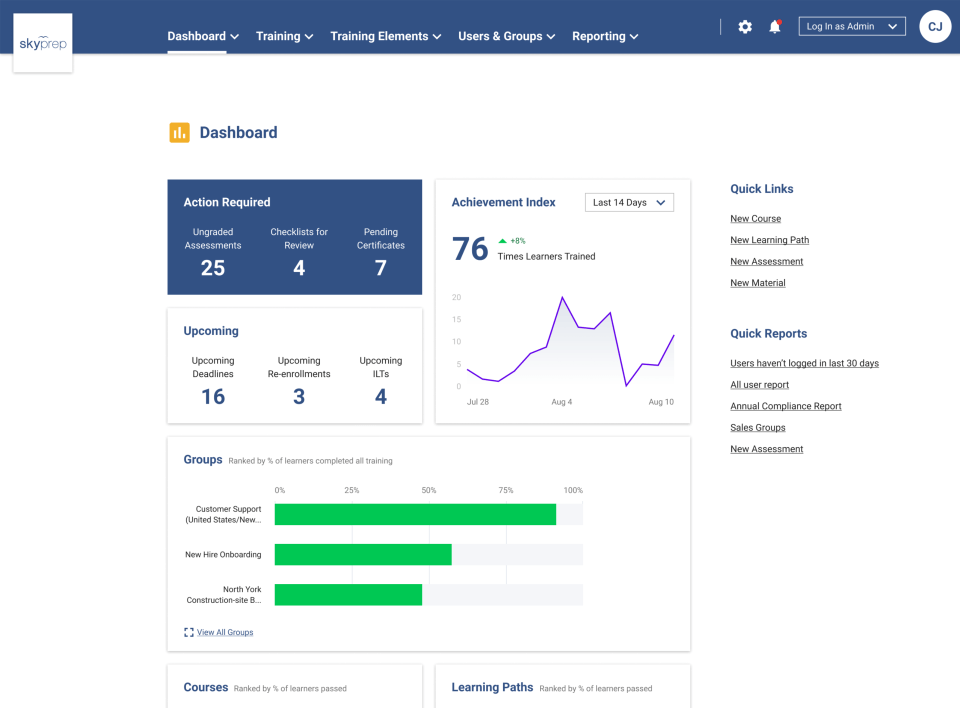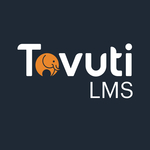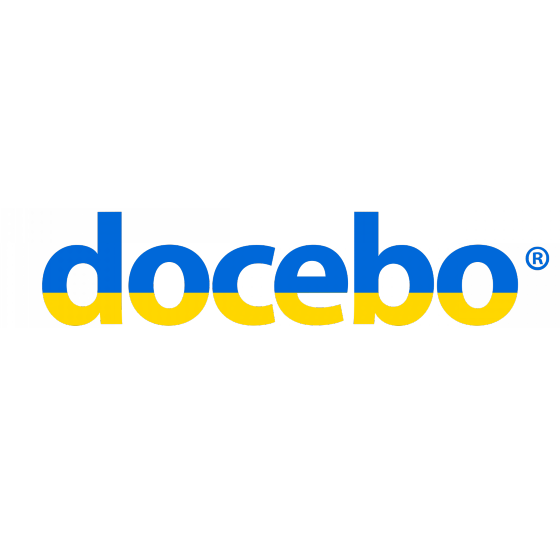10 Best Learning Management Systems Shortlist
Here's my pick of the 10 best software from the 24 tools reviewed.
Get free help from our HR software advisors to find your match.
With so many different learning management systems available, figuring out which is right for you is tough. You know you want to facilitate efficient learning and teaching by providing tools for creating, distributing, and monitoring course content, but now need to figure out which tool is best. In this post, I'll help make your choice easy, sharing my personal experiences using dozens of different learning management tools with teams of all sizes, with my picks of the best learning management systems overall.
Why Trust Our Software Reviews
We've been testing and reviewing HR software since 2019. As HR professionals ourselves, we know how critical and difficult it is to make the right decision when selecting software.
We invest in deep research to help our audience make better software purchasing decisions. We've tested more than 2,000 tools for different HR use cases and written over 1,000 comprehensive software reviews. Learn how we stay transparent, and take a look at our software review methodology.
10 Best Learning Management Systems: Comparison Chart
This comparison chart summarizes basic details about each of my top learning management system selections. You can view pricing details and the availability of free trials or demos side-by-side to help you find the best system for your budget and business needs.
| Tools | Price | |
|---|---|---|
| Trakstar | Pricing upon request | Website |
| Kallidus Learn | Pricing upon request | Website |
| Connecteam | From $29/month for 30 users (paid annually) | Website |
| iSpring Learn | From $2.87/user/month (billed annually) | Website |
| Absorb LMS | Pricing upon request | Website |
| SkyPrep | Pricing upon request | Website |
| TalentLMS | From $89/month | Website |
| 360Learning | From $8/user/month | Website |
| Tovuti | Pricing upon request | Website |
| Docebo | Pricing upon request | Website |

Compare Software Specs Side by Side
Use our comparison chart to review and evaluate software specs side-by-side.
Compare SoftwareHow to Choose a Learning Management System
A learning management system can help you centralize your internal learning resources and create more flexible learning experiences for your employees, based on their needs. To help you figure out which LMS best fits your needs, you need to pinpoint your key users and document their specific challenges first.
As you work through your own unique LMS software selection process, keep the following points in mind:
- What problem are you trying to solve - Start by identifying the challenges you're trying to overcome. This will help you clarify the features and functionality the learning management system needs to provide.
- Who will need to use it - To evaluate cost and requirements, consider who will be using the software and how many licenses you'll need. For a learning management system, you'll likely want access for your entire workforce, with special access for your HR administrators and managers. Once that's clear, it's also useful to rank the needs of your different users to identify the key priorities for your power users, managers, and employees, to ensure they're all met.
- What other tools it needs to work with - Clarify what tools you're replacing, what tools are staying, and the tools you'll need to integrate with, such as HR management systems, performance management systems, and communication tools like Slack and Microsoft Teams. You'll need to decide if the tools will need to integrate together, or alternatively, if you can replace multiple tools with an all-in-one employee learning & development platform.
- What outcomes are important - Review the capabilities you want to gain or improve, and how you will be measuring success. For example, you may want to offer learning experiences in more flexible formats, gain stronger tools for progress tracking, or improve your compliance rates for internal training purposes. You could compare LMS features until you’re blue in the face but if you aren’t thinking about the outcomes you want to achieve, you could waste a lot of valuable time.
- How it would work within your organization - Consider the software selection alongside your existing workflows and systems. Evaluate what's working well, and the areas that are causing issues that need to be addressed.
Remember every business is different — don’t assume that a learning management system will work for your organization just because it's popular.
Best Learning Management System Reviews
Below is a brief description of each learning management system that made it into my top 10 list. I’ve explained why I picked each system and summarized the key features that showcase each LMS’s best use case. I’ve also included screenshots to give you a snapshot of their user interface too. Plus, there are 10 more bonus options below, if you still want more choices to consider.
Trakstar is a SaaS company that offers a suite of products to help you manage your various HR functions. One of those products is their learning management system (LMS), called Trakstar Learn.
Why I picked Trakstar Learn: I appreciate Trakstar Learn’s auto-enrollment function, which helps expedite the course enrollment process when you have new employees to train. Rather than enrolling employees individually, you can select a subset of courses (e.g., onboarding) and assign them to groups of employees, teams, or departments to be enrolled with a single click. The LMS then automatically sends out all the online learning materials to your learners by email.
The course content creation tool is one of the easiest to use and most versatile in the industry. Users can create not just simple course content, but also multimedia content, with gamification, quizzes and assessments, and other unique options. The reporting and compliance features allow HR teams to conduct document compliance training, as well as evaluate departmental success and monitor progress across the entire workforce.
Trakstar Standout Features & Integrations
One standout feature of this platform is that it can be bought together with the other HR tools offered by Trakstar. The company has an applicant tracking system (ATS) for recruiting new hires, a performance management platform for nurturing your existing workforce, and a workforce analytics tool to help you measure the output of your HR initiatives. This makes it a modular and scalable solution, depending on the needs of your business.
Integrations include ADP Workforce Now, ej4, Paylocity, BambooHR, GoToWebinar, Ramco, Shopify, UKG Pro, Zoom Webinars and many single sign-on (SSO) applications.
Pros and cons
Pros:
- Easy to integrate SCORM content from third-party providers
- Training can be linked to employee performance goals
- One of a suite of HR SaaS products
Cons:
- Small list of pre-built integrations
- Pricing details and plan features are not transparent
Best learning management system to launch corporate training quickly
With Kallidus Learn you can distribute personalized learning experiences for your employees at scale. The learning solution works for companies of any size.
Why I picked Kallidus Learn: I chose Kallidus Learn because of how quickly you can get your training programs up and running. The platform includes over 100 ready-to-go courses you can use to launch corporate training at your company. It also has additional modules that address the full employee lifecycle, from onboarding to offboarding, as well as modules to recruit and attract top talent, monitor employee engagement, and assess employee performance.
Kallidus Learn Standout Features & Integrations
Standout features include blended learning formats (a combination of online, in-person, video, and social learning), plus tools to create segmented course content for each user (or groups of users) to create a more personalized learning experience.
To ensure training compliance, the system also has an auto-assign and reminder feature that sends personalized follow up emails to any employee who hasn't completed their training, to keep your company compliant.
Integrations include Meta for Business, Microsoft Office, Natural HR, Rewards Gateway, Tazio, and Yammer.
Pros and cons
Pros:
- Support team is responsive and helpful
- Caters to all learning styles
- Easy back end management
Cons:
- Course catalogue can be challenging to navigate
- Notifications are not customizable
Connecteam is a workplace software provider that offers platforms for training management as well as internal communications and operations.
Why I picked Connecteam: The training management platform provides the tools you need to build, manage, and track your employee training initiatives. But I chose it for my list because of its unique features that make for a more engaging training experience for your staff. You can create fully customized video courses, even if you're not a technical expert or videographer. You can also add quizzes and evaluations to your training modules to ensure people are retaining the key takeaways.
Connecteam Standout Features & Integrations
Standout features of this software include the mobile app, which allows employees to do their training from their mobile device. The training platform also facilitates employee recognition and rewards, so you can give meaningful recognition when people complete their trainings. Finally, one of the other great features of this software are its pre-built templates. Ready-made industry-specific and topical training modules are available for you to use.
Integrations include Paychex, Xero, Gusto, QuickBooks Payroll (online + desktop), Google Calendar and others.
Pros and cons
Pros:
- Tracks training progress per employee
- Does not require technical expertise
- Keeps an updated database of all courses created
Cons:
- Complex pricing structure
- Integration details are limited
Best learning management system for authoring and tracking capabilities
iSpring Learn is a learning management system with advanced features and a scalable pricing structure that makes them a great choice for enterprise organizations.
Why I picked iSpring Learn: The number of advanced features included in this platform are what landed it its spot on my list. It's highly customizable, and even has white-label branding so you can create a unified employee experience across it and your other tools. You can also have your training content translated into other languages using the localization feature.
The software is cloud-based and offers unlimited storage. But if you need the security of on-premise installation, it's available, too. These are all helpful features and functionalities for large-scale enterprise businesses.
iSpring Learn Standout Features & Integrations
Some of the standout features of this platform are its tools for boosting employee engagement in training programs. You can set up colorful badges, dynamic leaderboards, and gamification elements in your learning modules. Another nice feature is the direct messaging tool and a designated Q&A section where learners and course authors can communicate on course material.
Integrations include ADP, BambooHR, Salesforce, Workday, and Zoom. Additional integrations can be configured using their REST/SOAP API.
Pros and cons
Pros:
- Well-suited for processes that require extensive training
- 360-degree feedback feature
- Flexible and versatile to suit various training and learning needs
Cons:
- Complicated pricing structure (many modules and add-on options)
- Limited native software integrations
Absorb LMS is a learning management system with smart administrative features, high quality learner engagement tools, and even ecommerce options to sell your custom built courses online.
Why I picked Absorb LMS: I chose this software for my list because of its powerful artificial intelligence (AI) capabilities. The system's AI can help you customize the learner experience for each employee. It can anticipate each employee's needs and connecting them to relevant training.
The AI can also support your day-to-day administrative tasks. You can give it simple or complex reporting requests, and it will carry out the work on your behalf. AI is also incorporated into the system's search capability, helping enhance your search results based on your historical choices.
Absorb LMS Standout Features & Integrations
Standout features include the platform's intuitive dashboard with multi-language support. The dashboard is in full accordance with WCAG 2.0 standards, making your online employee development program as inclusive as it is effective. You can also set up customized learning experiences for different teams and departments within your organization, as well as for partners and other external learners.
Integrations include ADP, BambooHR, ClearCompany, Namely, Salesforce, Webex, Zoom, and single sign-on (SSO) applications.
Pros and cons
Pros:
- Great customer service
- Extensive customization options
- Robust pre-built templates
Cons:
- Resources lack a thumbnail feature
- Limited assessment features
SkyPrep
Best learning management system with personalized customer support
SkyPrep is a powerful learning management system (LMS) that helps organizations train their employees, customers, and partners with ease.
Why I picked SkyPrep: I included SkyPrep because it's well-known for its best-in-class customer support. Every client on a paid plan is paired with a dedicated and knowledgeable Customer Success Manager who creates a personalized action plan to help you get the most out of their LMS system. Whether you're looking for an LMS to onboard employees, train customers on your products, keep up with compliance requirements, or sell your courses online, you'll be well-supported along the way.
SkyPrep Standout Features & Integrations
Some of the software's standout features include role-based training workflows and individual client portals. With these tools, you can craft more personalized learning experiences for your audience. You can also add custom branding to the platform, giving it a familiar feel for employees, clients, or partners.
Integrations include ADP, BambooHR, BigBlueButton, Ceridian Dayforce, Cisco Webex, ClickMeeting, Google Suite, GoToMeeting, Microsoft Teams, Office 365, Paylocity, PayPal, Salesforce, Shopify, Stripe, UKG Pro and Zoom. You can also access additional custom integrations using their API, or by connecting a paid Zapier plan.
Pros and cons
Pros:
- Excellent course authoring tools
- Easy to set up & learn
- Ability to craft personalized learning experiences
Cons:
- Automatic video captions locked to highest paid plan
- Pricing is not transparent
Talent LMS easy-to-use platform for creating engaging training programs for your teams.
Why I picked Talent LMS: I chose this software because of its friendly drag-and-drop interface and the gamification features in its content creator. You can add videos, webinars, and presentations to your learner dashboard. Then, you can craft quizzes and tests to assess your learners' retention of the information in your training modules.
The platform also provides a user-friendly experience for learners. Your team members will have an overview of which courses they're enrolled in and how much of each one is left to complete. The mobile apps for iOS and Android also make it easy to access learning materials from a mobile device.
Talent LMS Standout Features & Integrations
One standout feature of this product is its messaging and forums for courses. Learners can connect with one another and discuss what they're taking away from the course content, supporting a more social learning environment.
Another nice feature is the ability to supplement your custom learning resources with ones from the system's library. You can choose from several SCORM-compliant modules and assets to build up your courses quickly.
Integrations include BambooHR, GoToMeeting, Salesforce, Zoom. A paid Zapier account will unlock additional integrations.
Pros and cons
Pros:
- Robust certificate design
- Unlimited courses with all paid plans
- Freemium plan for up to 5 users and 10 courses
Cons:
- Limited cross-object reporting
- Live chat support limited to top-tier plans
360Learning offers an LMS specifically designed for peer-to-peer learning. The company also offers solutions for employee onboarding, employee coaching, frontline (deskless) workforce training, global training management, and customer training.
Why I picked 360Learning: This platform made my list because anyone on your team can share knowledge internally by creating learning content within the software. For example, a sales leader could create tutorials about sales best practices that the entire sales team can then study. Or, someone from your product team could quickly create a course explaining new software updates for the whole company.
This approach of peer-to-peer training encourages a more collaborative work environment. Employees can take their learning into their own hands, and each person is empowered to share their knowledge. It's an effective way of building community and cross-functional upskilling across your organization.
360Learning Standout Features & Integrations
Standout features include plenty of tools to streamline course creation, like built-in video and screen recording, and cheat sheets that simplify text doc creation. Users can also design multi-question assessments to evaluate employee learning. There's also an option to co-author learning assets so several team members can create content collaboratively.
Integrations include Google Chrome, Microsoft Teams, Salesforce, and Slack.
Pros and cons
Pros:
- Peer learning gives employees ownership of their domain
- Social and collaborative learning features included
- Clean and modern UI, intuitive and easy to learn
Cons:
- No free plan available
- Occasional glitches with embedding links
Tovuti is an LMS with plenty of useful features. You can easily create courses and lessons with assessments to measure progress. And your admin team can create reports to get all the data they need about course participation.
Why I picked Tovuti: The tool is white-label, meaning you can replace all the Tovuti branding with your own so it looks like your own technology. It also offers plenty of options for gamification which can help improve learner retention. You can hand out badges, create games, and highlight leaderboards to encourage participation.
You can create a virtual classroom to let participants learn together. It has video conferencing functionality so people can communicate and interact with each other. There is also a chatbox and the ability to share and make notes on learning resources. It’s a good way to create a blended learning experience that combines classroom and independent learning.
Tovuti Standout Features & Integrations:
Features include personalized experiences, resources on-demand, online course templates in a wide selection of themes, mobile-friendly training, rich interactive content, a whiteboard, participation controls, survey tools, session recording & sharing, end-to-end data encryption, single sign-on, and customer support that's available 24/7 + 365 days a year.
Integrations are available with Active Directory, ADP, Auth0, BambooHR, BizLibrary, Okta, OneLogin, Stripe, and Zapier. They also have an API to support additional custom integrations as well.
Docebo is an artificial intelligence (AI)-based learning platform that makes it easy for organizations to create custom learning journeys for their people. It includes an intuitive content creator and access to a wide library of existing courses and resources.
Why I picked Docebo: Their LMS system stands out due to its intuitive content creator tool called Shape. Shape uses AI to automatically create course materials based on your existing internal or external knowledge sources. For example, you can paste a blog post URL into the content generator and it will turn this into slides. The content this tool generates is highly customizable so you can get it to match your exact needs. Once finished, you can translate it into multiple languages so anyone in your organization can benefit from the lessons.
Docebo Standout Features & Integrations:
Features include a multitude of content creation tools, workflow automations, custom domains, audit trails, gamification, certifications, social learning, mobile learning, and a customizable learning analytics dashboard with 20+ drag-and-drop widgets to track your key performance indicators (KPIs). You can also supplement your own lessons with learning resources from Docebo’s content library. The library contains thousands of courses on a huge variety of business topics. It’s easy to import these into your company app so employees can access them on the go.
Integrations are available natively with 400+ software systems through the Docebo Connect Integrations Marketplace, including Adobe Connect, BambooHR, BigCommerce, Eventbrite, GoToMeeting, HubSpot, Mailchimp, Microsoft Sharepoint, Okta, PayPal, SAP SuccessFactors, Slack, Wordpress, Zoom, and many other systems.
Other Learning Management Systems
Here are a few more options that didn’t make the best learning management systems list. They’re also great products and solid options if the LMS systems above didn’t satisfy all your needs:
- LearnDash
Best for hosting courses through WordPress
- SkillSoft
Best for skills-based leadership and development programs
- Constructor
Best LMS for employee, partner, and customer training
- Hone
Best learning management system for leadership training
- BetterUp
Best learning management system for access to quality coaching
- Eduflow
Best learning management system for peer-to-peer feedback
- Leapsome
Best to combine learning, performance, and engagement
- eloomi
Best learning management system for all-in-one learning and development
- WeSchool
Best LMS and corporate training solution with social learning features
- Qooper
Best learning management system for internal knowledge sharing
- Moodle
Best open-source learning management system
- LearnUpon
Best for training internal and external audiences
- Thinkific
Best no-code course builder for creators
- D2L Brightspace
Best to create courses for collaborative learning
Related HR Software Reviews
If you still haven't found what you're looking for here, check out these other related tools that we've tested and evaluated:
- HR Software
- Payroll Software
- Recruiting Software
- Employer of Record Services
- Applicant Tracking Systems
- Workforce Management Software
Selection Criteria for Learning Management Systems
Selecting the best learning management systems for this list requires a deep understanding of internal learning & development (L&D) and internal training processes, and how common pain points can be alleviated by choosing the right system. Drawing on my personal experience as an L&D support person — where I organized internal and external training, maintained training and compliance records, and prepared our training-related statistics — I was able to pinpoint the LMS features that add the most value for users on both sides of the table.
Using my experience to guide my final selections, I examined each system in fine detail, using the key criteria below as my framework:
Core Learning Management System Functionalities (25% of total score): To be considered for inclusion in my list of the best learning management systems, the LMS solution had to offer the following basic functionalities first:
- User-friendly course templates and multimedia content creation tools to create internal training materials from scratch
- A pre-loaded course content library that staff can access according to their preferences
- An intuitive user interface (UI) that makes a positive and engaging connection with your active users to create a positive user experience (UX) for them
- Learner reports and analytics that document individual progress, measure overall engagement, and assist with compliance management
Additional Standout Features (25% of total score): To help me narrow in on the best employee engagement software out of the numerous options available, I also took note of any unique features, including:
- AI-driven content recommendations or advanced analytics capabilities
- Innovative engagement features such as personalization, gamification, or social learning capabilities
- Tools to customize learning experiences and create tailored learning paths for your employees based on their role or personal interests
- Automatic compliance-tracking features for easy oversight of required or mandatory training, including certification expiry dates
- The ability to support offline learning via mobile devices, for when your employees are off the grid
Usability (10% of total score): To evaluate the usability of each LMS, I considered the following:
- An intuitive design and user interface, with a minimal learning curve to master
- Clear and straightforward content organization, including the ability to create content libraries through drag-and-drop tools
- A good balance between powerful features and ease of use to accommodate all skill levels and create a positive user experience
- Either dedicated mobile apps or a mobile-friendly user interface that supports flexible learning on both Android and iOS mobile devices
- Role-based access controls that are straightforward to configure
Onboarding (10% of total score): To get a sense of each software provider's customer onboarding process, I considered the following factors:
- A streamlined setup process and clear configuration guidelines
- The availability of training materials such as videos or interactive tutorials
- Customizable templates to speed up the onboarding process
- Support for migrating employee data into the new platform
Customer Support (10% of total score): To evaluate the level of customer support each vendor offered, I considered the following:
- The availability of multiple support channels, including email, phone, and chat
- The existence of a self-service knowledge base or other self-help resources to speed up troubleshooting
- The overall quality, responsiveness, and helpfulness of the support team during customer onboarding and post-purchase, as inferred from customer reviews
Value for Price (10% of final score): To gauge the value of each software, I considered the following factors:
- The availability of free trials or demos to test the software before purchasing
- Competitive and transparent pricing models that reflect the software's feature depth and explain which features are included at each level
- Tiered pricing plans that cater to different business sizes, from small to medium-sized businesses (SMBs) up to enterprise-level organizations
Customer Reviews (10% of final score): Evaluating customer reviews is the final element of my selection process, which helps me understand how well a product performs in the hands of real users. Here are the factors I considered:
- Whether a product has consistently high ratings across multiple review platforms, indicating a broad level of user satisfaction
- Specific praises, criticisms, or trends in customer feedback that indicate the software's strengths or areas for improvement
- Whether customer feedback specifically mentions issues with ease of use, customer support responsiveness, or lacking features
By using this assessment framework, I was able to identify the learning management systems that go beyond basic requirements to offer additional value through unique features, intuitive usability, smooth onboarding, effective support, and overall value for price.
Trends in Learning Management Systems (LMS) for 2024
Employee training, upskilling, and cross-skilling are increasingly important as organizations feel the pressure to keep pace with emerging technologies and stay afloat in economically uncertain times. Learning management systems can greatly contribute to a culture of ongoing development, and help you ensure your staff are up to date on the skills and qualifications they need to do their best work.
Here are some of the ways these systems are evolving to better address the shifting needs of businesses and their workforce:
- Personalized Learning Paths: LMS platforms are increasingly using AI and machine learning algorithms to analyze user performance and preferences to tailor course content and offer personalized learning paths. This functionality addresses the challenge of diverse learner needs within organizations, enabling more targeted training that improves outcomes and learner satisfaction.
- Mobile Learning and Accessibility: With the rise of hybrid and remote working environments, mobile learning and enhanced accessibility features are becoming increasingly important. This trend addresses the need for flexible learning options that cater to employees working from various locations. Mobile-friendly LMS platforms ensure continuous learning and development, regardless of an employee's physical location.
- Gamification and Interactive Content: Novel and unusual features such as gamification and interactive content are gaining traction. These features make learning more engaging and enjoyable, leveraging competition and rewards to motivate learners. This approach addresses the challenge of learner engagement and retention, a common pain point for HR professionals.
- Microlearning and Bite-Sized Content: The shift towards microlearning reflects a growing understanding of attention spans and the need for flexible, concise training modules. This feature caters to the modern learner's preference for quick, digestible pieces of content that can be easily incorporated into a busy schedule or consumed easily on a mobile device.
- Advanced Analytics and Reporting: For leaders who aim to be strategic partners in their organizations, understanding the impact of learning initiatives is vital. Advanced analytics and reporting capabilities provide valuable insights into the effectiveness of your training programs, supporting a data-driven approach for making future program adjustments. These tools can help you monitor key metrics like:
- Training completion rates,
- Assessment and evaluation scores, and
- Engagement with various training modules.
This snapshot of LMS trends shows a clear focus on enhancing the learning experience and making the format and delivery of learning materials more accessible. As these platforms continue to develop, they promise to offer even more innovative solutions to meet the changing needs of learners and organizations alike.
What is a Learning Management System?
Learning management systems (LMS) are streamlined digital platforms for education and training. They provide a centralized space for creating, delivering, and tracking educational content and courses. LMSs enable efficient learning by offering tools for educators to manage course materials and for learners to access and engage with these resources. The purpose is to simplify the educational process, make it more accessible and effective, and support a diverse range of learning needs.
Features of Learning Management Systems
Learning management systems can do a lot of the heavy lifting when it comes to offering flexible learning environments, tracking learning progress, and supporting upskilling and employee development. Here are the features I consider essential when reviewing learning management systems:
- Course Management Features: This includes a handful of useful tools such as personalization features, learning paths, and role-based course groupings that will help you curate the most relevant learning materials for learners at the individual, group, job function, or department level.
- Content Management Features: This includes tools for uploading and organizing multimedia materials into libraries, version control for course content, easy integration with external resources, and any other tools that make it easy to update and maintain course materials.
- Assessment and Competency Tools: These are tools that help you ensure that your employees are actually retaining the information they're learning. They include features like skill assessment questionnaires and spot quizzes that measure learning comprehension.
- Learner Engagement Features: Learner engagement features include things like training gamification, employee leaderboards with training scores, and internal communication tools that keep students engaged. Beyond that, some systems allow learners to collaborate within the LMS, ask questions & add comments, or encourage peer-based learning.
- Tracking and Reporting: Comprehensive tracking and reporting capabilities allow educators to monitor learner progress and engagement. This feature is indispensable for identifying areas where learners may need additional support, or for monitoring required or mandatory training for compliance purposes.
- Automated Alerts and Notifications: These features are especially valuable for organizations that have specific training requirements, such as those in safety-sensitive industries. With integrated alerts and notifications, your HR professionals won't have to chase down employees to complete any mandatory training. Instead, the system will do that work automatically on your behalf.
- Collaborative Learning Tools: You don't want your employees being trained in a silo. Instead, the best LMS systems include communication and collaboration features that support social learning, allowing employees to post questions or comments within an internal chat to spark engagement with other colleagues.
- Mobile Compatibility: A mobile-friendly platform ensures that learners can access materials anytime, anywhere. This feature is vital for accommodating the needs of learners who rely on mobile devices for their educational activities. (Make sure the LMS is compatible with both Android and iOS devices to ensure maximum flexibility for all your active users.)
- Customization and Branding: The ability to tailor the look and feel of the platform to match an organization's branding enhances the learning experience. Customization ensures that the LMS feels like a natural extension of the organization's educational offerings.
- Customer Support: Even though LMS systems are very straightforward and intuitive for the most part, you still want to know that the vendor you choose has your back if you need them. That's why I always double-check what kind of support a vendor offers, including customer support by phone, email, or chat.
For a more advanced summary of other key LMS features, I recommend reading our article: 18 Key Learning Management System Features You Need to Know.
Benefits of a Learning Management System
A well-chosen learning management system can function as a cornerstone of your employee development and corporate training environment, giving you the tools you need to deliver, track, and manage your internal training programs. By investing in the best LMS for your needs, you can expect to gain the following benefits:
- Centralized Learning Resources: LMS platforms house all learning materials in one location, making it easier for users to access and for organizations to manage. This centralization ensures that everyone has access to the same information and resources, streamlining the learning process, reducing redundancy, and providing a consistent learning experience for all users.
- Scalable and Flexible Learning: When using an LMS, businesses can easily scale their training programs to accommodate growth and adapt to changing learning needs. This flexibility supports continuous learning and development opportunities, catering to a diverse workforce with varying schedules and learning preferences.
- Enhanced Tracking and Reporting: LMS platforms provide advanced tools for monitoring user progress and measuring the effectiveness of training programs. This capability allows businesses to make data-driven decisions about how to improve and tailor their training initiatives, ensuring they meet their learning objectives and return on investment.
- Improved Learner Engagement and Retention: Interactive features, multimedia content, and personalized learning paths within LMS platforms engage users more effectively than traditional training methods. Enhanced engagement leads to higher retention rates, ensuring that learners not only complete their courses but also absorb and apply the knowledge gained.
- Reduced Training Costs: By reducing the need for physical materials, travel, and instructor-led sessions, LMSs offer a cost-effective alternative to traditional training methods. Organizations can allocate their resources more efficiently, by investing in high-quality online training that delivers measurable outcomes.
As you can see, investing in a learning management system isn't just about adopting new technology; it's about creating a learning culture that covers the needs of all learners, offers greater flexibility and analytics, and reduces operational costs, while streamlining learning processes to make them easily scalable. By investing in an LMS, businesses can unlock the full potential of their workforce and drive operational success.
For more on this topic, this article covering the benefits of learning management systems is a logical next step.
Costs & Pricing for Learning Management Systems
LMS providers typically offer a range of plans to accommodate the diverse needs and scales of organizations, from startups to large enterprises. These plans are designed to provide flexibility and scalability, ensuring that businesses can find an option that fits their specific training and development requirements. Below is an overview of common LMS plan options and pricing to help you make an informed decision.
LMS are all SaaS products, which means you pay a monthly subscription to access them, generally based on the number of users you have. For some systems, pricing details are only available upon request. However, you can still get a sense of the features they include with each pricing plan by taking a closer look at their website.
Plan Comparison Table for Learning Management Systems
| Plan Type | Average Price | Common Features |
|---|---|---|
| Free | $0 | Access to basic features, limited user count, and community support |
| Basic | $5-20/user/month | Basic learning management features, reporting, and email support |
| Standard | $20-50/user/month | Advanced analytics, customization options, integration capabilities, and phone support |
| Premium | $50-100/user/month | Full feature access, dedicated support, advanced integration, and personalized training |
| Enterprise | Custom pricing | Custom features, enterprise-grade security, a personal account manager, and bespoke training solutions |
When selecting a plan, consider both your immediate and long-term organizational needs. While free and basic plans offer a good starting point for small teams and budgets, standard, premium, and enterprise plans provide the scalability and features necessary for large organizations to fully optimize their training programs. I also recommend taking advantage of a free trial, if available, before you commit to a contract.
Learning Management Systems: Frequently Asked Questions
Here are some answers to commonly asked questions you may have about learning management systems, how they work, and how they can add value to your internal HR learning and training initiatives:
Are there different types of learning management systems?
There certainly are, and if you’re in the market for an LMS, you should definitely school yourself in the different types of learning platforms out there.
First, consider the size of your organization. If you’re shopping for an LMS for a large, multi-national organization or enterprise, you’ll want something with robust features, including location-specific customizations and the ability to translate content. In that case, you’ll likely find what you need in my list of the Best Corporate Learning Management Systems.
If you’re working for a small or medium-sized business (SMB), you can likely get away with something more affordable that offers lean but useful features to organize your training content and track your learner progress. If that sounds like you, take a look at my list of the Best Learning Management Systems for Small Businesses instead.
Aside from the size of your business, there are other important business needs you should also consider. Ask yourself how you plan to use your chosen LMS. Do you need it primarily to help with your onboarding or health & safety training? Or will it be used more for professional development and upskilling?
Also, how do you want the software delivered to you? Most LMS providers offer their services on a SaaS (software-as-a-service) subscription model where their software is cloud-hosted. However, if your business has tight security requirements, or you’re working for a government or educational institution, a self-hosted LMS may be a more prudent option to pick.
How can I tell which LMS is right for my business?
Before you commit to purchasing an LMS, you need to analyze your organization’s learning needs. Ask yourself the following questions to point yourself in the right direction:
- What are your company’s learning needs?
- Will your training courses be instructor-led or will staff complete the course modules independently?
- Which elements of your current learning and development program are working, and which are not?
- What are your wish list features that you would really like to gain by purchasing a new LMS system?
- Are there any LMS features you don’t want or need?
- What is your realistic budget for purchasing an LMS system?
Consult with other members of your HR department to brainstorm these questions together. Once you’ve settled on your answers, you’ll have a better sense of the ideal type of learning management system for you.
The next step is convincing your upper management to approve the financial investment in the LMS software of your choosing. For tips on how to get buy-in from management, take a look at our article on How to Make a Business Case for HR Software for our expert tips.
How popular are learning management systems? Show me some stats!
Learning management systems have a lot to offer, and have surged even more in popularity since the COVID-19 pandemic began. Here are some interesting stats related to LMS use that prove this point:
- In 2019, the global LMS market was valued at $8.76 billion. Since then, it is expected to grow to a value of $38.10 billion by 2027!
- Mobile learning, specifically, is expected to reach a market size of $80.1 billion by 2027.
- 66% of learning & development professionals have experienced substantial growth within their role since the beginning of the COVID-19 pandemic.
- 90% of students prefer e-learning content instead of classroom learning.
- 75% of employees prefer video-based training instead of reading text-heavy training information.
- 82% of learning and development professionals say reporting analytics is the most important aspect of using an LMS.
Why is compliance monitoring an important part of LMS software?
Compliance monitoring is an important aspect of most internal employee training programs. This is especially true for organizations working in potentially dangerous industries with employees in safety-sensitive positions. Some training is considered legally mandatory. That’s why you absolutely need an LMS system that automatically tracks training compliance for you.
What does that mean exactly? Basically, you want an LMS system that will chase down incomplete training on your behalf automatically, rather than relying on your HR staff to follow up on loose ends. Some training may come with expiry dates, and you want a system that can automate those reminders as well. On top of that, you want a system that automates compliance reports for you, in case you get audited by a safety inspector unexpectedly.
Can an LMS meet specific industry needs?
Absolutely, many learning management systems can be tailored to specific industry requirements. These platforms often offer customizable modules and content that can align with unique regulatory compliances, operational standards, and learning objectives particular to industries like healthcare, finance, or manufacturing.
It’s all about choosing a system with the right features and flexibility. You want one that can grow and adapt as your industry evolves. Plus, many LMS providers work closely with their clients to ensure their system meets these specific needs, offering custom development or integrations as necessary.
Do learning management systems support mobile learning?
Most modern LMS platforms are designed with mobile learning in mind. They’re built to be responsive, ensuring that courses and materials are accessible on smartphones and tablets. This flexibility is key for supporting a remote or on-the-go workforce, allowing employees to engage with their training anytime, anywhere.
How do learning management systems engage learners?
Learning management systems can help companies engage staff in training and development content with features like:
- Interactive content
- Personalized learning paths, and
- Gamification elements like badges and leaderboards
They often also include social learning features, allowing for discussions and collaboration among peers. Real-time feedback and assessments help learners understand their progress and areas for improvement. By catering to various learning styles and providing flexible access to resources, LMSs create a more dynamic and engaging learning experience.
Other Learning & Training Software Reviews
With learning, training, and employee development already on your mind, you may also want to take a look at these other related software reviews too:
- Corporate Learning Management Systems
- Learning Management Systems for Small Businesses
- Enterprise Learning Management Systems
- Learning and Development Certifications
- Training Management Software for Skill Building
- Employee Training Software
- Onboarding Software for Training New Hires
- Online Training Software for Internal Training
More Resources for Best-in-Class Learning Programs
Still craving a bit more information? Here are some of our other top articles covering learning management, and how to do it right:
- How A Learning Management System Can Benefit Your Business
- 5 Employee Learning Trends to Shape Your Learning Strategy
- A Culture of Learning Has Two Enormous Organizational Benefits
- 18 Key Learning Management System Features You Need to Know
- 3 Reasons Why Blended Learning Might Be Right for Your Team
- How to Revolutionize Your Talent Development with Skills Mapping
- Skills Gap Analysis: How to Identify Key Skills to Meet Your Business Goals
Learning Management Systems Make Learning Easy
LMS tools are the easiest way to streamline your learning process and offer new learning resources to your entire organization. They'll help you easily create courses and share them with your teams, or access quality training resources from pre-existing course libraries. You just need to choose a platform that suits your needs.
For more information and insight about how to manage your people, sign up for our free People Managing People newsletter too.


